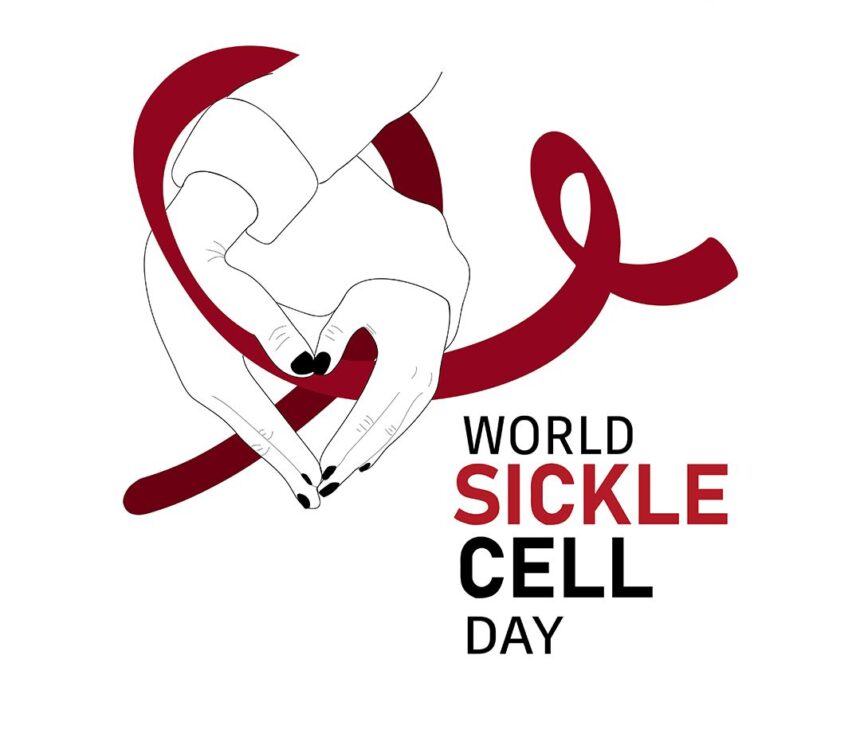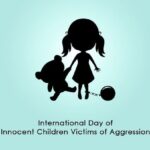🩸 World Sickle Cell Awareness Day: Uniting the World Through Awareness, Hope, and Action
World Sickle Cell Awareness Day, observed annually on June 19, is more than just another health observance—it’s a life-affirming call for compassion, education, and healthcare equity.
- 📜 History of World Sickle Cell Awareness Day
- 🕰️ Timeline: Key Moments in the Fight Against Sickle Cell
- ❗ 9 Powerful Facts About Sickle Cell Disease (SCD)
- ❓ Frequently Asked Questions (FAQs)
- Q1. What is Sickle Cell Disease (SCD)?
- Q2. When is World Sickle Cell Awareness Day observed?
- Q3. Why is this day important?
- Q4. Can SCD be cured?
- Q5. Who is most at risk?
- 💡 Significance of World Sickle Cell Awareness Day
- 🌐 How the World Observes June 19
- 💬 Wishing Messages for World Sickle Cell Awareness Day
- 🧠 Why It Matters in Our Daily Life
- 🏛️ Importance in Society
- 📌 5 Key Takeaways
- 🧭 Daily Life Impacts
- 🧩 Conclusion: Turning Pain into Purpose
Sickle cell disease (SCD) affects millions globally, and yet, awareness remains surprisingly low in many parts of the world. This day acts as a powerful reminder of the daily struggles faced by those living with the disease and the urgent need for support, research, and accessible care.
Let’s explore the origin, facts, significance, observance, and real-life impact of this day in over 1200+ meaningful words.
📜 History of World Sickle Cell Awareness Day
The United Nations General Assembly officially recognized June 19 as World Sickle Cell Awareness Day in 2008, under Resolution A/63/L.63. The aim was to increase public knowledge and understanding of sickle cell disease and the challenges faced by patients, families, and caregivers.
SCD is a hereditary blood disorder that causes red blood cells to assume an abnormal crescent or “sickle” shape. These sickled cells block blood flow, causing chronic pain, infections, and organ damage.
Though the disease has existed for centuries, it wasn’t until the 20th century that scientists began understanding its genetic basis and clinical implications. With modern medicine, many patients can now live longer and more fulfilling lives—but not without awareness and access to care.
🕰️ Timeline: Key Moments in the Fight Against Sickle Cell
| Year | Event |
|---|---|
| 1910 | First description of sickle cell disease in Western medical literature. |
| 1949 | Sickle cell identified as a genetic disorder. |
| 1972 | U.S. Congress launches the National Sickle Cell Anemia Control Act. |
| 2008 | United Nations establishes World Sickle Cell Awareness Day on June 19. |
| 2020s | Gene therapies and bone marrow transplants show promise for a cure. |
❗ 9 Powerful Facts About Sickle Cell Disease (SCD)
🧬 SCD is inherited—if both parents carry the gene, there’s a 25% chance a child will have the disease.
🌍 Over 20 million people worldwide live with SCD, with a large majority in sub-Saharan Africa.
🩸 It primarily affects people of African, Indian, Mediterranean, and Middle Eastern descent.
👶 Many children with SCD do not reach age 5 in regions with limited healthcare access.
💔 The disease can cause stroke, organ damage, blindness, and frequent hospitalizations.
💉 Blood transfusions, antibiotics, and pain relief medications are essential for management.
🧪 A bone marrow transplant is currently the only potential cure.
🧠 SCD also causes psychological stress, school absences, and social stigma.
🌱 With proper care, many patients now live into their 40s, 50s, or even longer.
❓ Frequently Asked Questions (FAQs)
Q1. What is Sickle Cell Disease (SCD)?
A genetic blood disorder where red blood cells become sickle-shaped, leading to blockages in blood vessels and reduced oxygen flow.
Q2. When is World Sickle Cell Awareness Day observed?
🗓️ Every year on June 19.
Q3. Why is this day important?
It spreads awareness, reduces stigma, and promotes early diagnosis, better care, and funding for a cure.
Q4. Can SCD be cured?
Not yet widely—but bone marrow/stem cell transplants and gene therapy show promise.
Q5. Who is most at risk?
People of African descent, though it also affects populations in India, the Middle East, and Southern Europe.
💡 Significance of World Sickle Cell Awareness Day
This day plays a crucial role in:
Educating the public and policymakers about SCD.
Encouraging genetic screening and early detection.
Promoting equal access to medical care, especially in underprivileged areas.
Supporting ongoing research for better treatments and a cure.
Empowering patients and families with hope and resources.
It highlights the inequality in healthcare access that leaves many patients suffering in silence and under-treated.
🌐 How the World Observes June 19
👨⚕️ Healthcare Institutions
Host free testing camps, awareness seminars, and blood donation drives.
Educate healthcare workers about holistic treatment approaches.
🧒 Schools and Colleges
Include awareness sessions in biology or health curriculum.
Organize storytelling sessions with survivors and caregivers.
📲 Social Media
Use hashtags like #SickleCellAwarenessDay, #StopSicklePain, or #SCDWarriors.
Influencers and NGOs launch info reels, webinars, and virtual events.
🧍Communities and NGOs
Distribute awareness pamphlets, organize solidarity walks, and paint city landmarks red.
Provide psychological counseling for patients and caregivers.
💬 Wishing Messages for World Sickle Cell Awareness Day
💌 “To every warrior battling SCD, your strength inspires the world. Let’s raise awareness and save lives!”
🌍 “On this World Sickle Cell Awareness Day, let’s vow to educate, donate, and advocate.”
🧬 “Genes do not define a life—awareness and care do. Stand tall, speak up, support the fight.”
💪 “Healing begins with awareness. Together, we can make a difference in the lives of SCD warriors.”
🧠 Why It Matters in Our Daily Life
Even if you don’t know someone with SCD personally, this day matters because:
It teaches us the value of genetic awareness and early testing.
Reminds us of the importance of equitable healthcare access.
Encourages compassion and respect for those who fight daily health battles.
Inspires medical students and researchers to contribute to life-saving work.
Highlights the power of community and global unity in combating health issues.
🏛️ Importance in Society
SCD is not just a medical issue—it’s a social, economic, and human rights issue. Its societal impact includes:
Educational disruption for young children due to frequent illness.
Employment challenges and discrimination against adults with SCD.
Financial strain on families due to repeated hospitalizations.
Lack of national health policies and genetic counseling in several countries.
Recognizing these issues drives social change and pushes governments to include SCD in national health agendas.
📌 5 Key Takeaways
🌍 Observed every year on June 19.
🧬 Aims to raise awareness about Sickle Cell Disease (SCD)—a hereditary and often painful blood disorder.
🩸 Primarily affects people of African descent, but is global in scope.
💉 Early diagnosis and proper treatment can drastically improve quality of life.
🧠 SCD awareness is essential for reducing stigma, encouraging research, and saving lives.
🧭 Daily Life Impacts
This day affects you, your community, and the healthcare world by:
Encouraging blood donations that are crucial for managing SCD.
Promoting genetic screening for couples planning families.
Informing policies to improve insurance and accessibility for patients.
Helping caregivers connect, learn, and find emotional support.
Fostering a global culture of health literacy and inclusiveness.
🧩 Conclusion: Turning Pain into Purpose
World Sickle Cell Awareness Day is not just a date on the calendar. It’s a rallying cry for awareness, equity, and action. Behind each statistic is a child, a mother, a student, or a dreamer whose life has been shaped by this condition.
It’s a reminder that while genes cannot be changed, societal response and medical support can.
So, this June 19, let’s go beyond a hashtag. Let’s talk, share, support, and transform lives—one empathetic action at a time.








